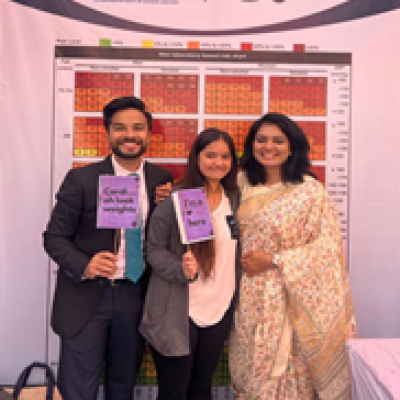IS YOUR HEART ELDER THAN YOU??
Cardiovascular diseases (CVDs), a group of heart and blood vessel disorders include rheumatic heart disease, coronary heart disease, and cerebrovascular disease amongst others. The modifiable risk factors that are known drivers of these heart diseases include unhealthy diet, physical inactivity, tobacco consumption and alcohol consumption. An essential method for preventing or postponing CVD incidents is the early identification and treatment of individuals who are at a risk of developing the disease. Risk assessment is a primary prevention strategy that enables target specific dietary and drug-based interventions by accurately predicting the course of disease in these individuals. The Framingham risk score (FRS) and WHO/International society of Hypertension (ISH) score are the two most commonly used methods to predict 10-year fatal cardiovascular disease risk. A prediction score that relies on a lab test, for example, blood lipid levels for screening purpose is convenient in developed countries. However, it can be too expensive to implement and adopt in middle and low-income nations with scarce testing facilities. As a result, emphasis is laid on assessing the validity of non-laboratory-based tests that can prove to be reliable alternatives to laboratory-based tests in resource limited settings.
It is said that “Seeing is believing”. ACIES 2022 presented me with a unique opportunity to apply this knowledge in an actual setting in out very own institute. We screened people for parameters including their age, gender, height, weight, systolic blood pressure, smoking status and BMI which are the basis of a non-laboratory-based test. Post this, in a very short period by evaluating the WHO/ISH chart for the South East Asia Region D SEAR D) we were able to predict the associate risk and identify low-risk, moderate-risk and high-risk individuals. Conducting such an activity helped me comprehend not only the paramount relevance and ease of a non-laboratory test over a tedious lab test but also the enormous dearth of awareness regarding our heart health. We were able to educate individuals about the various preventative measures that should be taken while promoting healthy dietary habits, physical activity and explain the negative impact of tobacco and alcohol consumption through innovative games.
Although, laboratory-based tests remain the mainstay of CVD risk assessment in India, carrying out screening activities at a pilot scale as such helped me experience the feasibility and accountability of the test at a grassroot level. Whether young or old, lean or obese, it assisted us to answer the question whether your heart is older than you?



Riddhi Solanki
MHA 22-24

Dr. Vishal Karmani
MHA 22-24